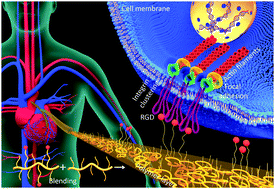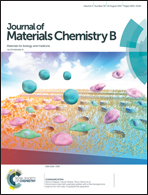Nano-scale clustering of integrin-binding ligands regulates endothelial cell adhesion, migration, and endothelialization rate: novel materials for small diameter vascular graft applications†
Abstract
Blood contacting devices are commonly used in today's medical landscape. However, such devices (including small diameter vascular grafts) are limited by poor blood compatibility and may fail due to thrombosis. An attractive strategy for improving the blood compatibility of such devices is to generate biomaterials that foster a confluent and functioning endothelial cell layer. Synthesizing materials that display integrin-binding peptide ligands is a common way to promote endothelialization. However, in addition to integrin-ligand binding, integrin clustering is necessary to achieve intracellular signaling events that influence cellular phenotype. In this study, we explored the impact of nano-scale clustering of integrin-binding ligands on endothelial cell functions by designing novel materials that promote the clustering of integrin receptors. RGD-functionalized copolymers were prepared via reversible addition–fragmentation chain transfer (RAFT) polymerization and used for the preparation of random and nano-clustered surfaces spanning a range of global and local RGD densities (global densities 0.4–1.9 μg of peptide per mg of polymer and local densities of 1–2.4 ligands per nano-cluster). The adhesion and migration of endothelial cells was improved on nano-clustered surfaces compared to random surfaces. The highest adhesion and migration speed of endothelial cells and the rapid development of the endothelial monolayer were observed on surfaces with the highest local and global peptide density. These results indicate that the nano-clustering of peptide ligands is a promising strategy for next generation cardiovascular biomaterials, especially for small diameter vascular graft applications where the development of a confluent and functioning endothelium holds the potential to prevent device failure due to thrombosis.



 Please wait while we load your content...
Please wait while we load your content...